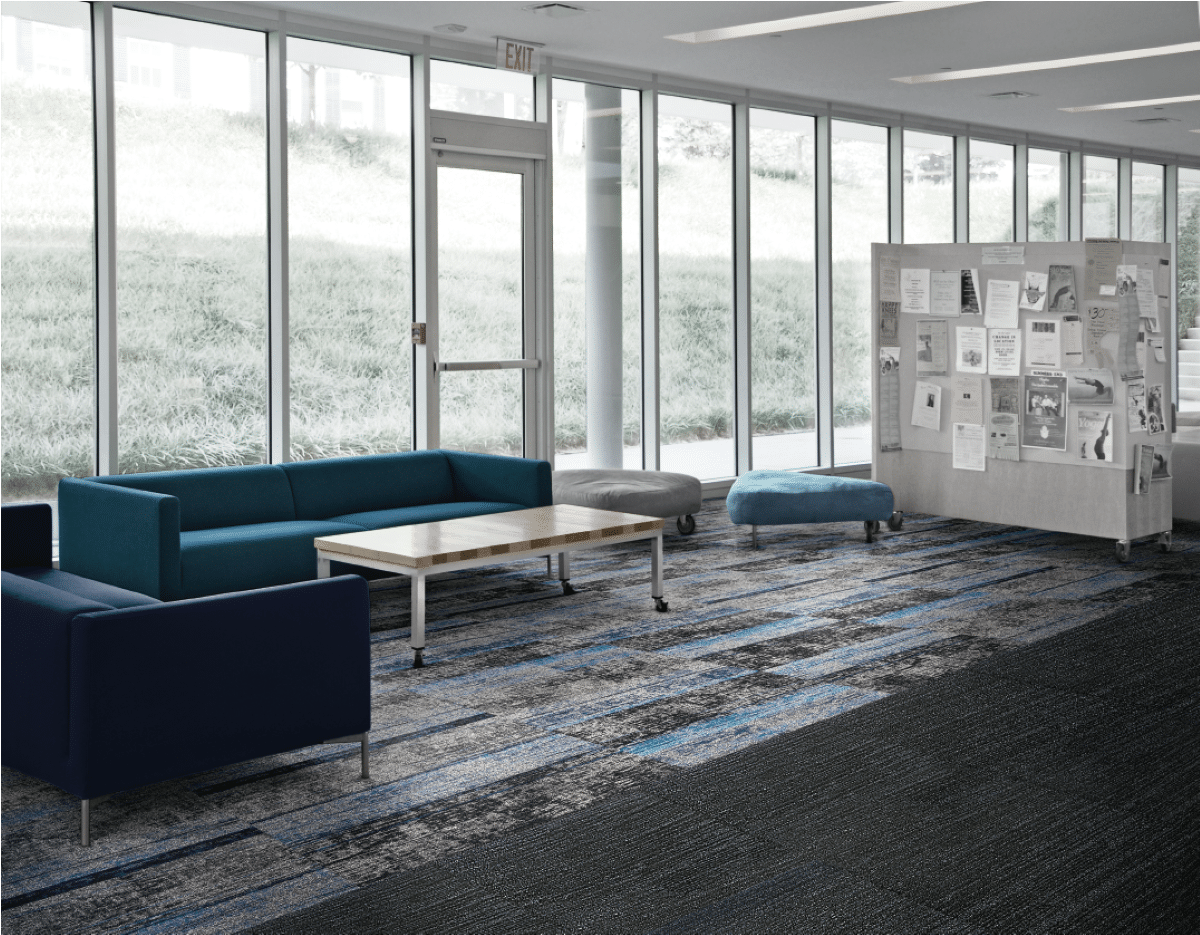While education design continues to evolve into more collaborative and inclusive environments that foster diverse learning styles and student/teacher needs, we are in the midst of another shift where these approaches are being perfected and improved.
In large part, the traditional classroom with rows of desks facing a lecturing teacher are gone. The classroom of the future embraces collaborative, open spaces to meet the students and teachers where they are.
Teachers have more flexibility to create the environment they need. Students have the flexibility to learn in the style that best suits them.
The opportunities are vast and exciting, yet new challenges are emerging for students and teachers alike to maintain focus and facilitate meaningful group learning.
The following are four key considerations for how flooring selection can help to optimize learning for your future classroom.
- Quieting the Classroom
Students in all settings need environments conducive to learning. Classrooms should be designed for listening and engaging; study spaces should be calm and quiet.
And yet, these environments are typically full of unintentional distractions—from physical noise to “loud” finishes, including furniture in flashy colors or flooring featuring bold patterns.
Choosing soft neutrals and calming colors can help set the intention of focus for a space. Keeping patterns simple and “quieter” allows the teacher more flexibility to turn the space into what’s needed for learning in that environment.
Opting for soft design materials and using supportive carpet with cushion backing contributes to improved acoustics, and that in turn supports attention span and productivity and absorption of information and other content.
- Space and Purpose Designation
The basic elements of color and pattern allow for the creation of small zones within a larger collaborative space to designate various types of learning.
For example, the reading nook must signal calm and focus to a student, whereas an arts and crafts zone should invoke engagement and creativity. Flooring in these spaces can designate those intentions.
- Sustainable Design
Many new facilities must abide by strict sustainability standards and may have net zero goals, and it’s more important than ever to specify products with the health of students in mind. This requires that designers and specifiers choose products that are PVC free and abide by industry certifications and standards such as red list, HPDs and EPDs.
Look for products that are made in this way along with cradle-to-cradle certification and LEED certification, so you can choose the product that works without worrying about the materials you’re putting under children’s feet.
- Durability and Maintenance
Durability and maintenance are, and always will be, a cornerstone of education design. Teachers shouldn’t be worried about tripping on loose carpet tiles, and maintenance staff can’t spend hours cleaning up spills. Education design is made for learning, and the materials used should be long-lasting and easy to maintain.
Durable performance and ease of maintenance meet the functional needs of these demanding spaces while providing the color and pattern options needed to create function. When choosing products, look for ones that meet sustainability standards with moisture tolerance, premium fibers with soil resistance and strong construction.
Open, collaborative learning environments are the future of education design, but when done without these considerations in mind, they can lead to distraction and confusion among students.
Using high-quality products and materials is the first step to a quieter and more focused classroom, while space designation and flexible design create an inclusive space.
This information is courtesy of Bentley Mills, which has defined design, color, quality, and customer service in the commercial carpet industry for more than 40 years. Their California-based brand manufactures and markets award-winning broadloom, carpet tile, and area rug products for interiors across the globe, www.bentleymills.com.










